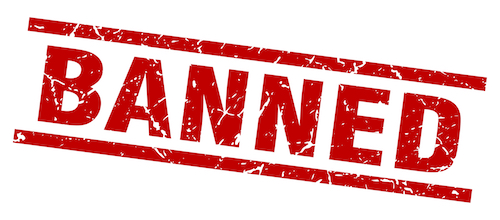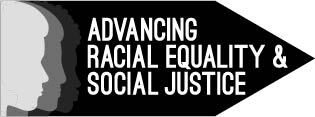Are government bans on the teaching of critical race theory unconstitutional?

Image from Shutterstock.
According to recent reports, local legislators have enacted bills in eight states banning the teaching of critical race theory in public schools, colleges and universities. Similar measures have been or soon will be introduced in 20 more.
CRT is an analytic framework that illuminates the manner in which racism and inequality are embedded within society and its structures. The anti-CRT legislative movement targets discussion of racism and bias in the public school system while chilling free speech in violation of the First Amendment.
What’s going on? The social, political and legal context
Significantly, the attack against CRT does not occur in a vacuum; rather, it is part of a pattern of legislative reprisals following 2020’s historic racial justice movement and in the aftermath of its presidential election cycle. Indeed, the backlash against CRT is part of a broader GOP response to the political mobilization of communities of color.
In response to the Black Lives Matters demonstrations after George Floyd’s murder by a Minneapolis police officer, Republican lawmakers introduced more than 80 anti-protest bills across the country. Targeting freedom of expression, some of these measures define a riot as constituting as few as three people and/or expand penalties from monetary fines to multiple-year prison sentences.
Additionally, after historically marginalized communities delivered Democratic victories in November, lawmakers introduced more than 360 voter suppression bills in the first three months of this year, the vast majority by Republicans. Subsequently, in Brnovich v. Democratic National Committee, the U.S. Supreme Court’s conservative majority upheld a voter suppression measure in Arizona signaling likely hostility to similar challenges from other jurisdictions.
In essence, anti-CRT bills are part of a broader pattern of retaliation steeped in race, politics and the law. But are they lawful?

Do Anti-CRT bills pass constitutional muster?
While the courts have not yet considered the constitutionality of anti-CRT measures, a string of cases from the McCarthy era in the 1950s may prove instructive.
During that time, lawmakers enacted Red Scare laws, including those designed to stifle the teaching of Marxism and Communism. Legal challenges to these measures led to the Supreme Court addressing whether the violated the First Amendment. A representative case is Yates v. United States (1957).
In Yates, the high court drew a distinction between advocating for unlawful action and the academic discussion of such a doctrine in the abstract. Indeed, laws that bar academic discussion—even of concepts that a subset of the public deems provocative or controversial—will not survive constitutional scrutiny unless such instruction crosses over into advocacy of unlawful conduct.
It is significant to note that this legal principle is implicit in other Supreme Court rulings. Consider, for instance, the religion clause cases.
In the post-9/11 context, parents have posed legal challenges to classroom instruction about Islam and Muslims in public education. While an entirely distinct legal standard applies in those cases, particularly where allegations of establishment clause violations are involved, the same implicit rule has emerged. The courts consistently defend the academic discussion of such subjects even when viewed as unpopular by a subset of the general population. These courts have reasoned that the classroom is a “marketplace of ideas” where a robust exchange should yield truth.
As such, anti-CRT bills that bar the discussion of racism and bias in the classroom are likely unconstitutional.
 Engy Abdelkader.
Engy Abdelkader.
What’s the point of public education, anyway?
In Brown v. Board of Education, the Supreme Court struck down its prior ruling in Plessy v. Ferguson by ending racial segregation in public schools, which began the demise of Jim Crow laws. Significantly, the Brown court reminds us of public education’s primary purpose: “Today, education is the most important function of state and local governments. … It is required in the performance of our most basic public responsibilities, even service in the armed forces. It is the very foundation of good citizenship. Today it is a principal instrument in awakening the child to cultural values, in preparing him for later professional training, and in helping him to adjust normally to his environment. In these days, it is doubtful that any child may reasonably be expected to succeed. In life if he is denied the opportunity of an education.”
Essentially, Brown teaches that public education is the foundation of good citizenship in democratic society. As such, if we are to address the scourge of racism and bias in our society and its structures, social change begins with a relevant education.
Indeed, consider the lived experiences of historically marginalized groups in contemporary America. According to the 2019 FBI Hate Crimes Statistics report, historically marginalized groups, including African Americans, Asian Americans, Jewish Americans, Latinos and Muslim Americans, continue to experience disproportionate rates of interpersonal violence. Further, regarding institutional discrimination, African Americans are disproportionately affected by police brutality, racial profiling while driving and stop-and-frisks. And Latinos and Muslim Americans are affected by discriminatory immigration laws also known as structural racism.
As such, good citizens in our democracy require an appropriate critical lens to understand the ways that racism and inequality manifests in interpersonal, institutional and structural contexts. CRT provides that necessary analytic framework.
Engy Abdelkader is a council member of the ABA Section of Civil Rights and Social Justice and chairwoman of the section’s Rights of Immigrants Committee. She also is a fellow of the American Bar Foundation. She teaches at the Mitchell Hamline School of Law and Rutgers University.
Editor’s note: This article was adapted from a talk Abdelkader delivered at the Mitchell Hamline School of Law on Sept. 21, 2021.
This column reflects the opinions of the author and not necessarily the views of the ABA Journal—or the American Bar Association.



